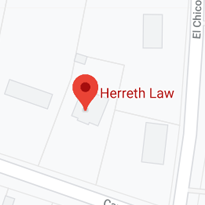 Largely since Texas does not have a refusal-to-submit law, about one in five DWI cases are chemical test refusal cases. Refusal-to-submit laws, like the one in Florida, make breath test refusal a separate criminal offense.
Largely since Texas does not have a refusal-to-submit law, about one in five DWI cases are chemical test refusal cases. Refusal-to-submit laws, like the one in Florida, make breath test refusal a separate criminal offense.
If there is no chemical test, Parker County prosecutors must rely on circumstantial evidence. Typically, the field sobriety tests provide this evidence. Although defendants have a right to refuse them, many defendants perform at least one or two.
Overall, Weatherford criminal defense attorneys are about twice as likely to win circumstantial evidence cases.
Finger to Nose Test
Supposedly, touching one’s fingertip to one’s nose measures physical coordination. But this test is completely unscientific and is not part of the National Highway Traffic Safety Administration’s three-test battery. So, most judges do not allow juries to consider it.
Romberg Balance Test
This test is not part of the NHTSA battery either, so many Parker County judges do not consider it. But sometimes, Weatherford DWI lawyers do not object to its use. Supposedly, standing with eyes closed, arms extended, and head back deprives individuals of all three balance senses, which are:
-
Vision,
-
Proprioception (knowing one’s body position in space), and
-
Vestibular function (knowing one’s head position in space).
Many officers have no idea what things like “proprioception” and “vestibular function” mean. They are unable to communicate these concepts to the jury, which makes them appear unqualified to administer FSTs.
Horizontal Gaze Nystagmus
Generally, the DWI eye test is the first test in the three-test battery. It’s also the most controversial one.
Intoxication causes nystagmus, or lazy eye, which is an involuntary pupil movement at certain angles. But many other things, mostly genetics or a mild childhood brain injury, also cause nystagmus. In fact, many people have a lazy eye. But the symptoms are so subtle that they only appear during times of extreme stress, like a DWI arrest.
For these reasons, some judges only allow the HGN test for limited purposes, such as probable cause for arrest.
Walk-and-Turn
The heel-to-toe walk test measures both cognitive ability and physical dexterity. Defendants must follow instructions and execute those instructions.
It is extremely difficult to complete the WAT whether a person is drunk or sober. That’s especially true if the defendant is wearing anything other than athletic shoes. The test is even harder if the defendant must walk heel-to-toe along an imaginary line instead of an actual line.
Moreover, the state must prove that the defendant failed the WAT because s/he was intoxicated, and not because s/he was sleepy, nervous, tired, disabled, or clumsy.
One-Leg Stand
The OLS is also a divided attention test which measures dexterity and cognitive ability. Many scientists claim that intoxicated people cannot walk and chew gum at the same time in this way.
Much like the WAT, the OLS is impossible to perform if the defendant has even the slightest mobility impairment. Additionally, it’s very hard to stand on one leg when one is physically tired. And by this time, the defendant has already performed several other tests.
Prosecutors often cannot establish guilt beyond a reasonable doubt in DWI refusal cases. For a free consultation with an experienced criminal defense attorney in Fort Worth, contact Herreth Law. Home and jail visits are available.

